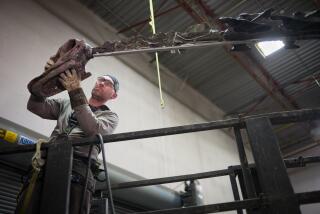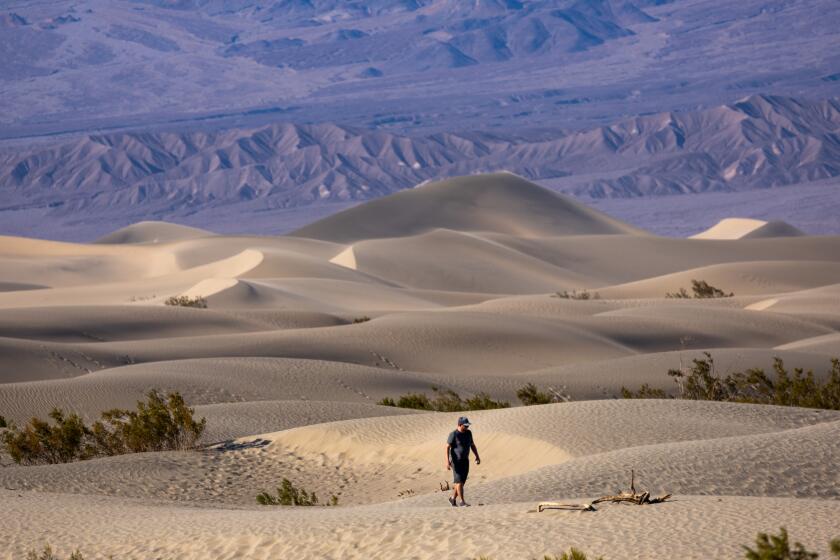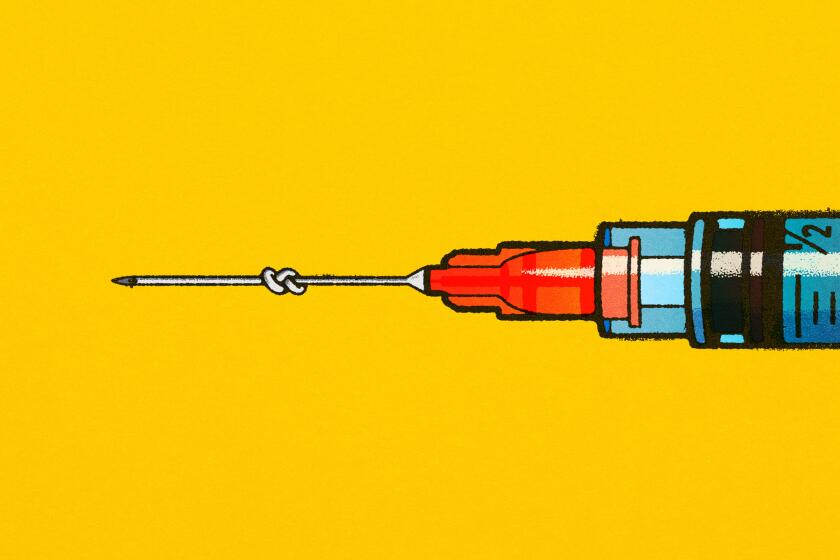Ancient toddler whose DNA helped science will now be reburied
The skeletal remains of an infant who lived in what is now Montana about 12,600 years ago will be reburied in a formal ceremony now that scientists have sequenced its genome, researchers say.
The fragments of the young boy’s skeleton are the sole human remains directly associated with the short-lived Clovis culture, according to scientists. The relics were accidentally discovered by a construction worker in 1968, at the so-called Anzick burial site in western Montana.
PHOTOS: Artifacts from the Clovis culture
The fragments, as well as 125 stone and antler tools, were covered in red ochre, a powdered mineral that was probably used during a burial ceremony, scientists believe.
In a study published Wednesday in Nature, scientists sequenced the genome of the boy, age 1 to 1 1/2, and said their findings shed new light on the complex human colonization of North America.
It had generally been believed that the Clovis people’s predecessors had come from Asia, via an ancient land bridge. However, a competing proposal - the Solutrean hypothesis - held that they were actually descended from people who had emigrated from southwestern Europe.
The new research argued strongly against that possibility, scientists said.
“The ancestors of this boy originated from Asia. The study does not support the idea that the first Americans originated from Europe, as proposed by the Solutrean hypothesis,” said study coauthor Michael Waters, an archaeologist at Texas A&M University.
Waters said the evidence showed the boy’s remains were genetically related to most modern Native Americans, especially those in Central and South America.
“This indicates that a single migration of humans introduced the majority of the founding population of the Americas ... at the close of the last ice age,” Waters said. “These genetic findings are consistent with the archaeological evidence that shows the American continent was first explored and settled around 15,000 years ago, with Clovis emerging 2,000 years later.”
While conducting research, senior study author Eske Willerslev, an evolutionary biologist at the University of Copenhagen, met with a number of Native American tribes in Montana to discuss the research. He said scientists and Native American groups haven’t always gotten along well, so he wasn’t sure what to expect at first.
“They showed a lot of interest in the study, but all of them said that now is the time for the skeleton to go back into the ground,” Willerslev told a documentary film crew. “This was a heart blow, because being a scientist, reburying probably the most important skeleton in the history of the Americas, it’s hard.”
But Willerslev said it was a sacrifice that science had to make.
“I realized that if scientists and Native Americans want to pursue their past together, there needs to be compromises on both sides. Therefore, we need to respect that they feel very strongly about this issue.”
The Clovis culture is so named because its first remnants were found in 1932 in Clovis, N.M. To archaeologists, the culture is characterized by the distinctive fluted stone spear points it left behind. The points feature a groove that allows them to be secured to a shaft.
Waters said the Clovis culture ended about 12,600 years ago, or around the same time the boy was buried. He said some of the tools buried with the boy were made of elk antlers - a rare commodity at the time - and dated to the beginning of the culture about 13,000 years ago.
The difference in age, Waters said, suggested the antler tools were ritual or heirloom objects that had been kept for generations. “They were something special,” he said.
Study coauthor Shane Doyle, an enrolled member of the Crow tribe and a Native American studies instructor at Montana State University, acted as the liaison between researchers and local Native Americans during the study.
At a news briefing, Doyle told reporters the child’s remains would be reburied this spring or summer. He also thanked the researchers for involving Native American tribes.
“I feel like this discovery basically confirms what tribes have really never doubted, that we’ve been here since time immemorial, and that all the artifacts, objects in the ground are remnants of our direct ancestors,” Doyle said.







